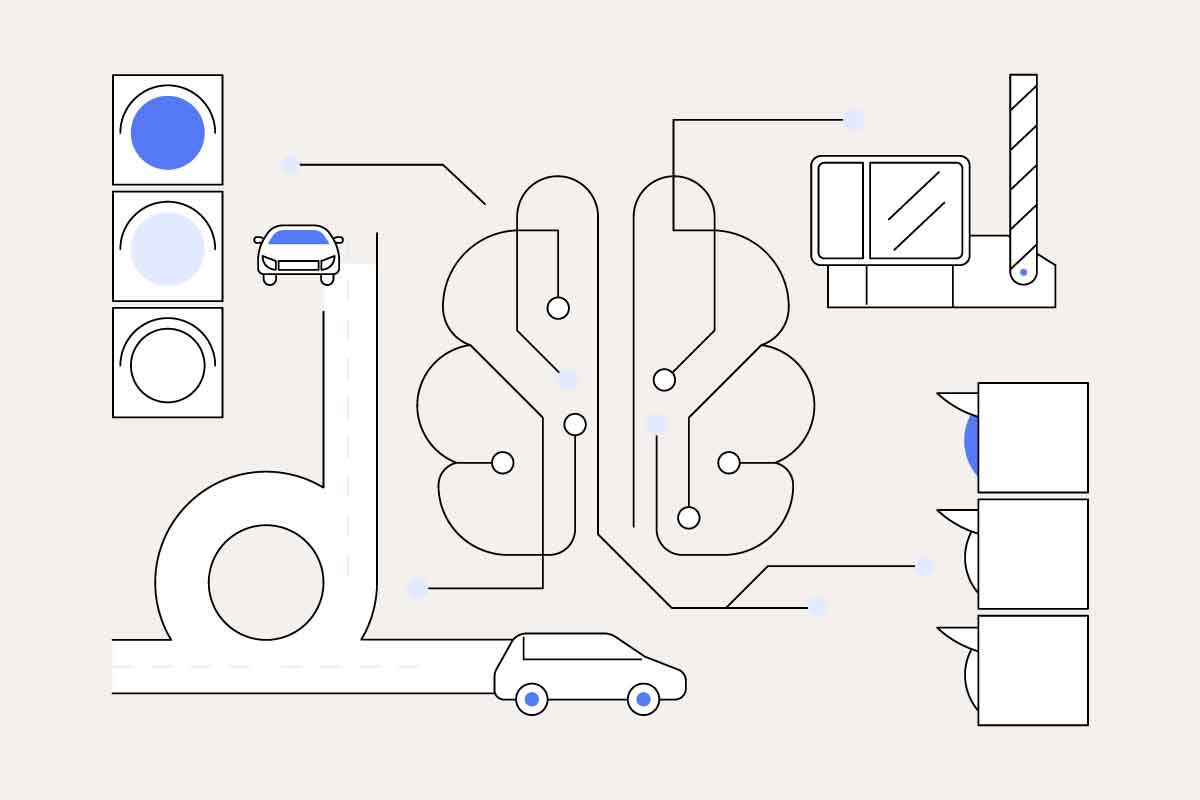In the evolving landscape of UK business, fleet management has become increasingly reliant on telematics technology. Telematics, a blend of telecommunications and informatics, is pivotal in modernising fleet operations. By leveraging this technology, businesses can achieve enhanced efficiency, safety, and cost-effectiveness.
Understanding telematics
Telematics systems collect and transmit data on vehicle usage, including location, speed, idling time, and vehicle diagnostics. This data is invaluable for fleet managers, offering insights into driver behaviour, fuel consumption, and maintenance needs.
Key benefits of telematics for UK fleets
- Improved safety: Telematics can monitor driving patterns, identifying risky behaviours like harsh braking or speeding. This information enables fleet managers to implement targeted training, significantly reducing the risk of accidents.
- Enhanced efficiency: Real-time GPS tracking ensures optimal route planning, reducing fuel consumption and improving delivery times.
- Cost reduction: By monitoring vehicle health, telematics helps in preventative maintenance, reducing the likelihood of costly repairs and downtime.
- Compliance with regulations: Telematics assists in adhering to legal requirements, such as the Driver’s Hours Rules and the forthcoming Clean Air Zones in urban areas.
Top telematics providers in the UK
Telematics technology has revolutionised fleet management in the UK. Here’s an expanded look at some of the top providers, along with their pros, cons, and cost considerations.
Verizon Connect
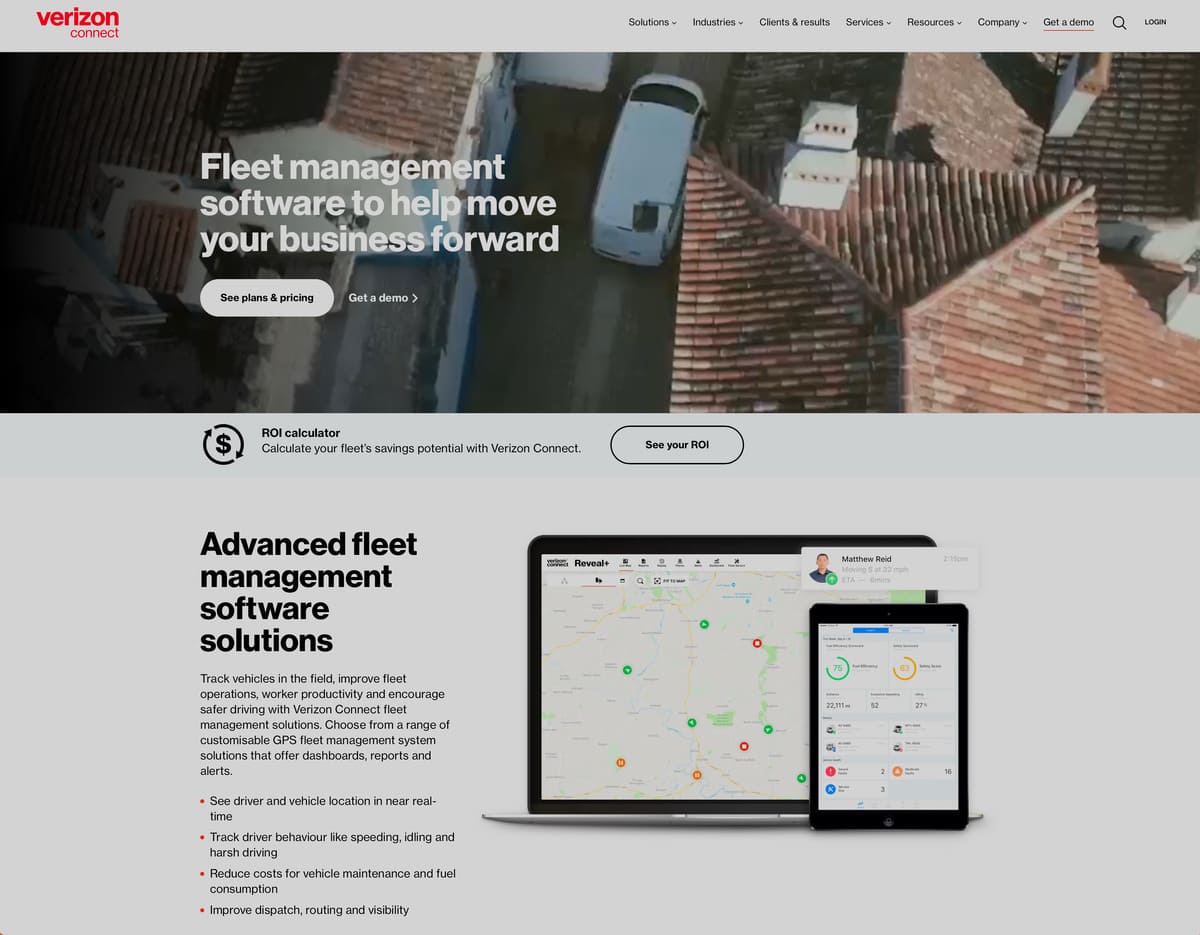
Verizon Connect is renowned for its comprehensive range of features that cater to various fleet sizes, from small businesses to large enterprises. Their platform provides detailed insights into driver behaviour, fuel efficiency, and vehicle maintenance. The user-friendly interface simplifies the management of fleet operations, making it accessible even to those with limited technical expertise.
Pros: Extensive feature set, user-friendly dashboard, scalable solutions.
Cons: Some users report a steep learning curve; higher cost for smaller fleets.
Costs: Pricing is typically bespoke, but it’s on the higher end, especially for smaller fleets. Expect to pay a monthly subscription fee per vehicle, with costs increasing with additional features.
Teletrac Navman
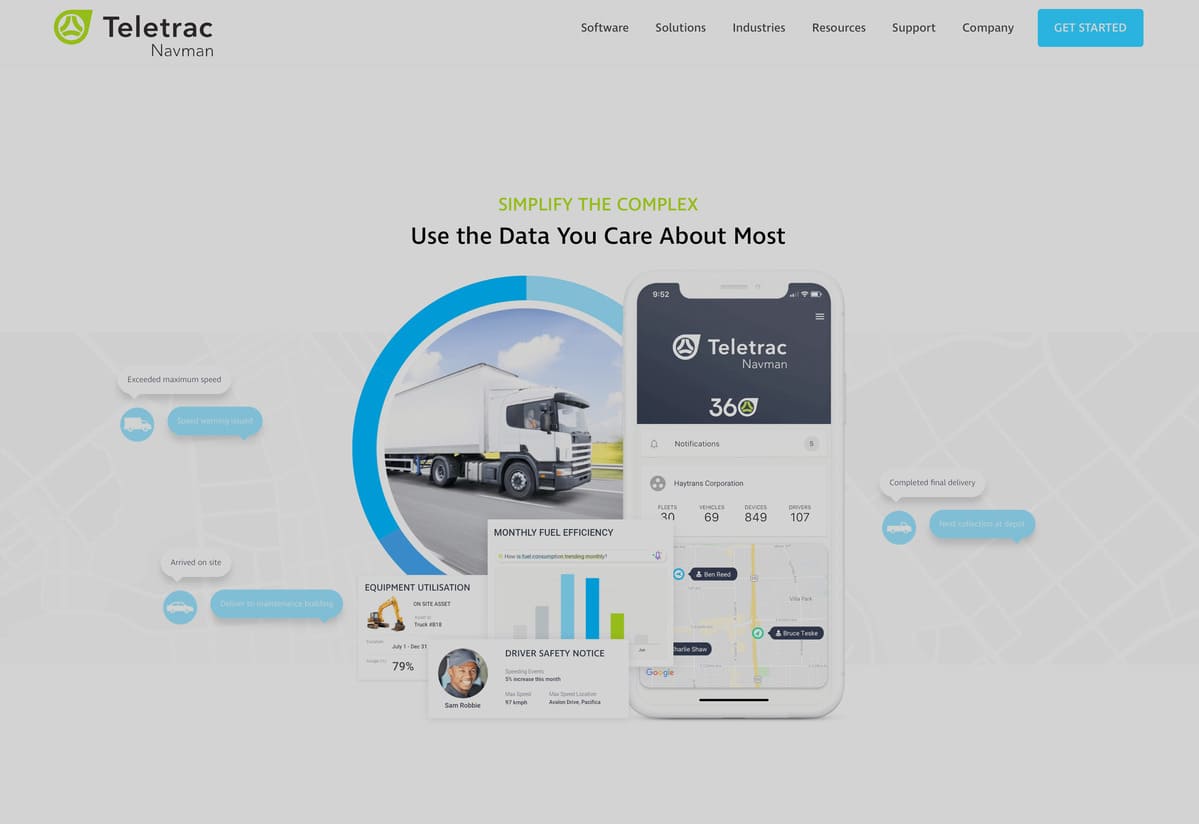
Teletrac Navman stands out for its focus on driver safety and compliance. Their solutions offer detailed safety scorecards and real-time alerts to help manage driver behaviour. Additionally, they provide excellent tools for compliance management, which is crucial in the heavily regulated UK transport sector. Their platform also features extensive reporting capabilities, allowing fleet managers to make data-driven decisions.
Pros: Strong focus on safety and compliance, real-time tracking, extensive reporting.
Cons: Interface can be complex; customer support has mixed reviews.
Costs: Pricing varies based on fleet size and features, but it’s generally competitive. Expect a monthly fee per vehicle, with additional costs for advanced safety features.
TomTom Telematics
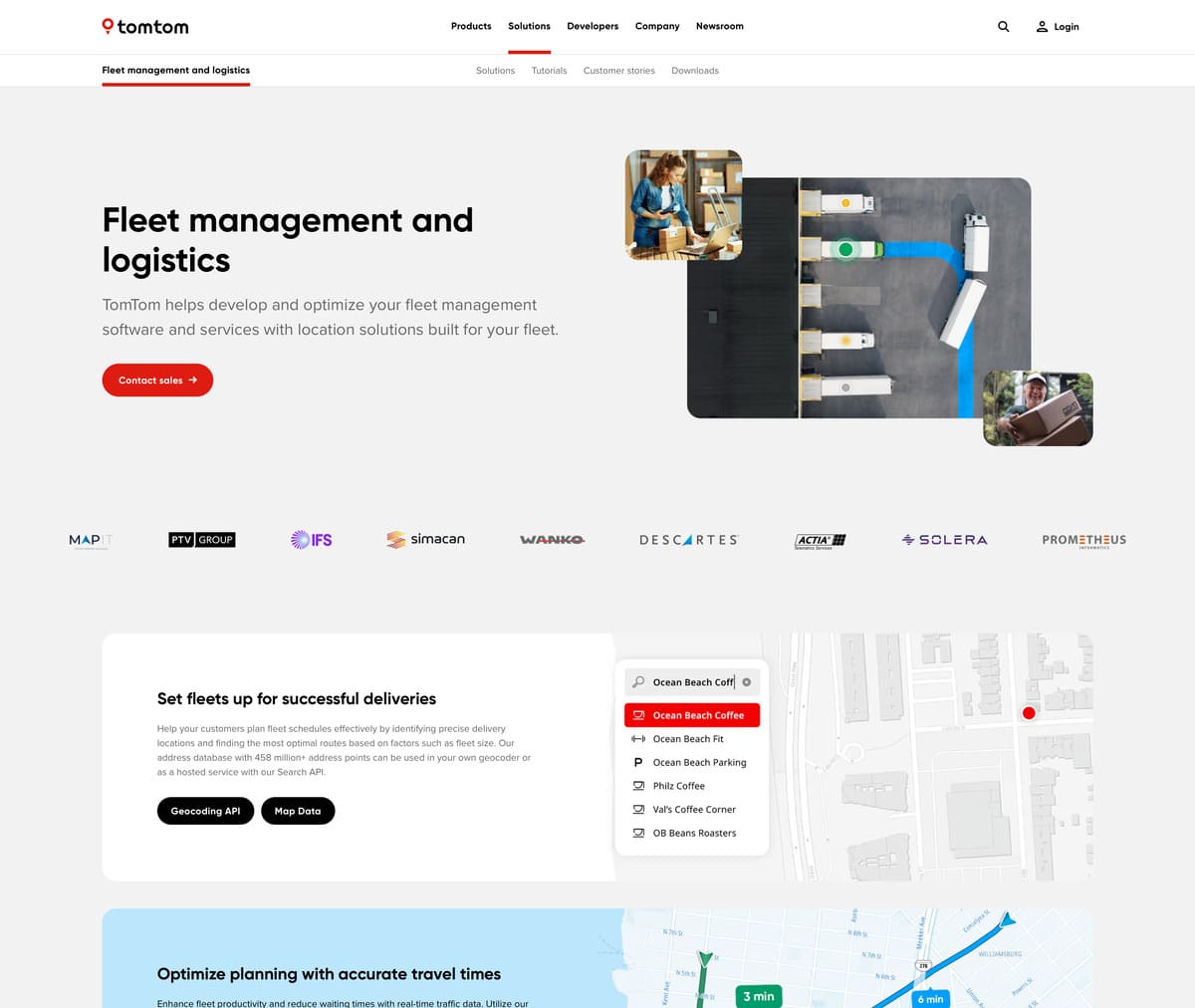
TomTom Telematics is a preferred choice for its robust tracking and detailed reporting, particularly suited for delivery and logistics businesses. Their solutions offer real-time traffic updates, helping to optimise routes and reduce delays. The platform also integrates seamlessly with existing business software, enhancing overall operational efficiency.
Pros: Excellent for route planning, integrates with other business tools, real-time traffic updates.
Cons: Hardware can be expensive; some users find the software less intuitive.
Costs: TomTom operates on a quote-based pricing model, which can be higher for advanced tracking and integration capabilities. Costs are typically per vehicle per month.
Fleet Complete
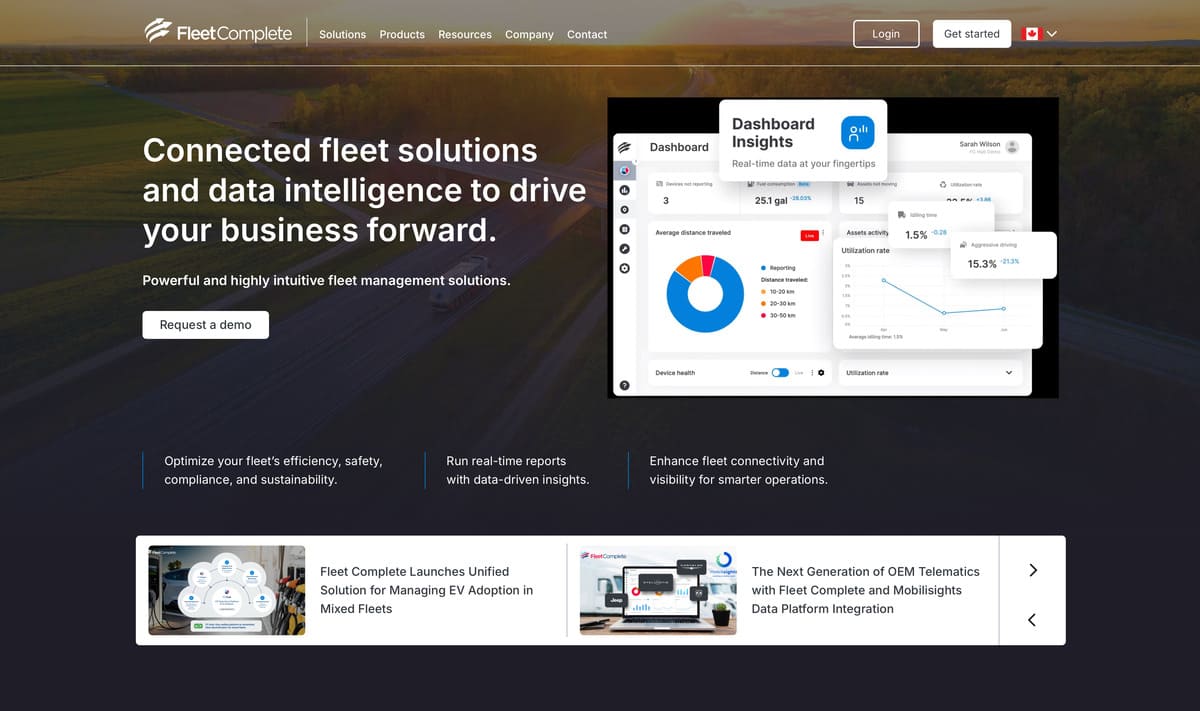
Fleet Complete offers a comprehensive suite of tools for fleet, asset, and workforce management. Their platform is designed to provide a holistic view of operations, aiding in everything from asset tracking to driver performance monitoring. They also emphasise customisation, allowing businesses to tailor the system to their specific needs.
Pros: Wide range of features, customisation options, strong asset tracking capabilities.
Cons: The platform can be overwhelming for small fleets; customisation requires time.
Costs: Pricing is customised based on the size of the fleet and the specific features required. Expect monthly fees per vehicle, with costs increasing for customised solutions.
Samsara
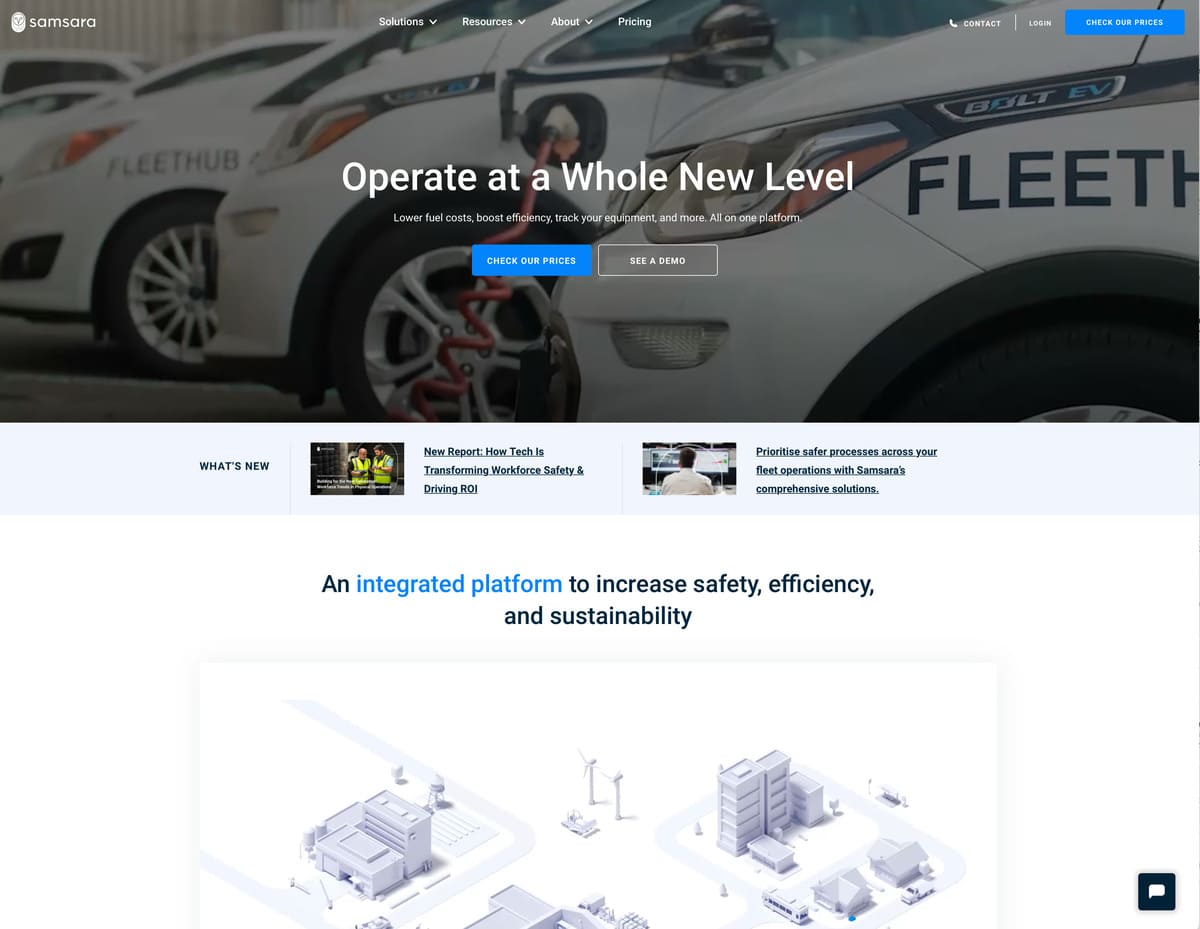
Samsara is known for its innovative approach, blending telematics with IoT technology to provide a comprehensive view of fleet operations. Their platform is particularly effective for businesses looking for a modern, integrated solution that covers everything from real-time tracking to fuel monitoring and safety compliance. Samsara’s user interface is highly intuitive, making it easy to access and analyse data.
Pros: Advanced IoT integration, user-friendly interface, excellent for data analytics.
Cons: Higher cost point, some features may be excessive for smaller fleets.
Costs: Samsara’s pricing is at the premium end, reflecting its advanced features. The cost structure is typically based on a monthly subscription per vehicle, with additional fees for premium features.
Implementing telematics in your fleet
When integrating telematics into your fleet, consider the following:
- Assess your needs: Determine what you need from a telematics system. Is it route optimisation, fuel management, safety monitoring, or compliance?
- Budget considerations: Telematics systems vary in cost. It’s essential to balance the features you need with what you can afford.
- Employee training: Ensure your drivers and fleet managers are adequately trained to use the system effectively.
- Data security: As telematics involves transmitting sensitive data, choose a provider that offers robust data security measures.
The future of telematics in the UK
The future of telematics in the UK is promising, with advancements like 5G technology and AI integration on the horizon. These developments promise even more efficient, safer, and smarter fleet management solutions.
In conclusion, telematics is a game-changer for fleet management in the UK. By choosing the right system and provider, businesses can reap substantial benefits, from cost savings to improved safety and compliance. As technology continues to evolve, the potential of telematics in transforming fleet operations is limitless.
FAQ about telematics for UK fleets and vehicles
Telematics combines GPS technology, onboard diagnostics, and mobile technology to track the location, movement, status, and behaviour of a vehicle. Data is collected and transmitted to a central server, where it’s analysed and made available to fleet managers via a web-based interface or mobile app.
Key features include real-time GPS tracking, route planning, fuel monitoring, vehicle diagnostics, driver behaviour analysis, and compliance management.
By monitoring driving patterns, telematics can identify risky behaviours such as speeding or harsh braking. This information allows managers to address safety concerns directly with drivers or through targeted training programmes.
Yes, by providing data on driving habits and vehicle performance, telematics can help identify areas where fuel efficiency can be improved, such as optimising routes or reducing idling time.
Yes, businesses must comply with data protection laws, like the General Data Protection Regulation (GDPR), ensuring the privacy of their drivers is protected. Additionally, they must adhere to transport-specific regulations, such as Drivers’ Hours Rules.
Costs vary depending on the provider and the range of features required. Generally, there is a monthly fee per vehicle, which can increase with additional features like advanced reporting or integration capabilities.
Modern telematics systems are designed to be user-friendly, with intuitive interfaces and dashboards. However, the ease of use can vary between providers, and some systems may require more training.
Many telematics systems offer integration capabilities with existing business software, such as CRM or ERP systems, enhancing overall operational efficiency.
Reputable telematics providers offer robust security measures to protect data. However, it’s important for businesses to review these measures and ensure they meet their security standards.
Future developments include the integration of AI and machine learning for more advanced data analysis, the use of 5G technology for faster data transmission, and increased IoT connectivity for broader operational insights.

